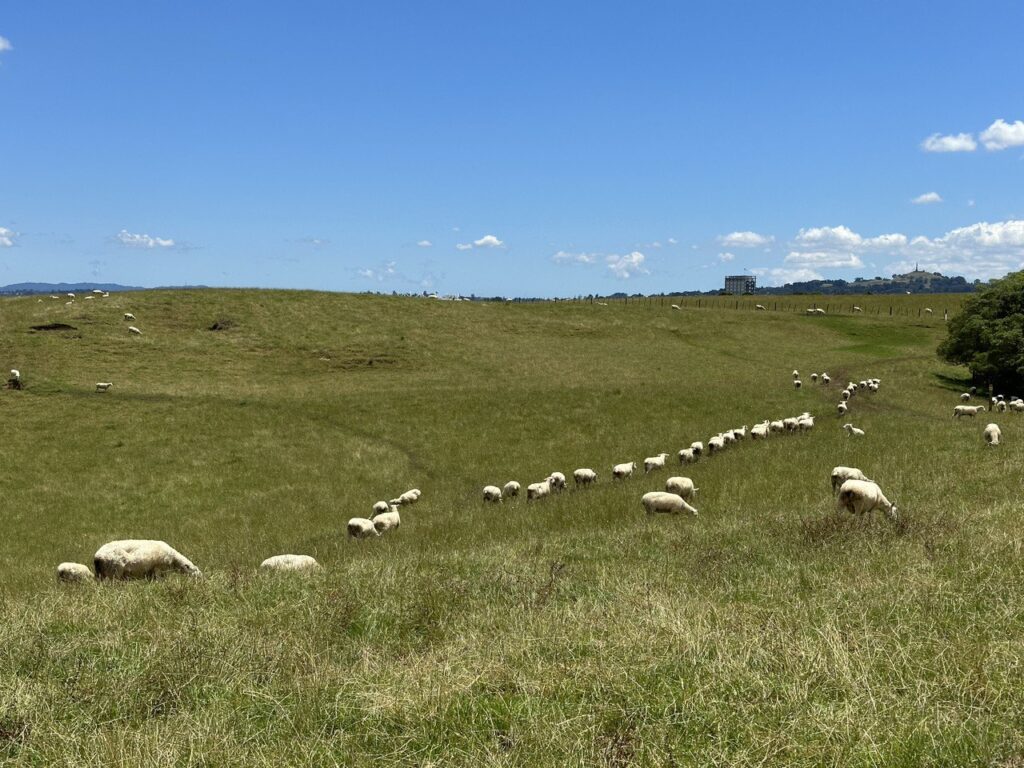
In the blink of an eye the first month of 2023 has already passed! In January 2023’s What’s been happening in the markets article we have a lot of news on fees, including new details on fee structures for Stake, Sharesies KiwiSaver, and ASB Securities. We also cover Squirrel’s new savings product, economic news, as well as what we’ve been up to during the month.
This article covers:
1. Market movements
2. Product updates
3. What we’ve been up to
1. Market movements
Here’s how the markets performed to 31 January 2023, in both their local currencies and in NZ dollar terms:
| Local currency | NZD | |
| NZ shares (S&P/NZX 50) | +4.31% | +4.31% |
| Australian shares (S&P/ASX 200) | +6.22% | +7.97% |
| US shares (S&P 500) | +6.18% | +4.79% |
| Bitcoin | +39.90% | +37.42% |
It was a positive start to 2023 following a difficult 2022. Even Bitcoin had a cracker of a month, with the cryptocurrency rising from around $16,500 to over $23,000 at the time of writing. It seems that sentiment towards the markets has become a little more positive since Christmas?
Economic news
The upward move in the financial markets comes as we start to see a glimpse of light at the end of the tunnel in the battle against inflation:
- In the US, December inflation figures came in at 6.5%, down from an annualised figure of 7.1% in November 2022. The rate of inflation has now fallen for 6 straight months, following a peak of 9.1% in June last year.
- In NZ, inflation for the December 2022 quarter was 7.2% (same as the September 2022 quarter). This was largely seen as a good thing as some were fearing that inflation would become worse (the Reserve Bank’s own estimates were at 7.5%).
Although interest rates are still expected to go up (with the NZ OCR likely increasing by 50 or 75 basis points in February), the fact that we’re potentially past the peak of inflation means we should start to see a slowdown in the interest rate rises that’s been hurting the markets.
In fact, we may see interest rates coming back down sooner rather than later. ASB and Westpac banks have adjusted their mortgage rates over the past month and now have an inverted rate curve. This is where longer-term mortgage rates are lower than shorter-term rates, which is somewhat unusual because you’d typically have to pay a higher rate to fix your mortgage for longer terms. But now these banks are predicting that interest rates will start to drop in the next couple of years, so are incentivising people to lock in their mortgages for longer terms while rates are still high.
| ASB | Westpac | |
| 1 year | 6.84% | 6.59% |
| 2 years | 6.79% | 6.79% |
| 3 years | 6.69% | 6.69% |
| 4 years | 6.59% | 6.59% |
| 5 years | 6.49% | 6.49% |
2. Product updates
Stake introduces brokerage fees

Following Sharesies’ fee changes announced back in December 2022, Stake has come to the party with their own pricing increase. Currently they charge no brokerage fee when buying and selling shares and ETFs on their platform. But from 4 March 2023, the following fees will start applying to all buy and sell transactions:
- Transactions under $30,000 USD – $3 USD brokerage fee
- Transactions $30,000 USD and above – 0.01% brokerage fee (which is effectively $3 USD + 0.01% on any amount in excess of $30k)
Their foreign exchange fees remain the same at 1%, with a minimum charge of $2 USD.
This is a massive change for Stake, and not a good one either. Their $0 brokerage model had been great for those who traded in and out of shares frequently, and made up for their relatively high foreign exchange fees. Now they’re no longer competitive against other platforms. For example, their new $3 USD transaction fee puts them in line with Hatch’s fee, but when you take into account the higher FX fee (1% vs 0.5%), Stake works out to be more expensive no matter how you invest.
Understandably a lot of investors are concerned about Sharesies and now Stake hiking their fees, and whether others will follow. Investment platforms are definitely hurting from the slowdown in business resulting from the bear market we’re in. We don’t know whether any other platforms are in line for a price hike, but would predict platforms that’ve been used heavily by speculators (like share trading and crypto platforms) will be more susceptible to fee increases than platforms primarily used for long-term buy-and-hold investing (like fund managers and fund platforms).
Squirrel adds on call savings

Squirrel has been offering peer-to-peer lending investments for a few years, and now they’ve built in an on–call savings product into their platform. Any money you deposit into their platform now earns interest at a variable interest rate, currently sitting at 3.50%. Squirrel achieves this rate by holding the money at a bank (in a BNZ trust account), then passing most of the interest earned onto their customers (while keeping a small margin to cover their costs). The money isn’t invested into any P2P loans.
Firstly, this is good news if you’re already an investor on Squirrel’s platform. While the interest rate of 3.50% isn’t as high as the P2P loans themselves (which are 6.75% to 7.50%), it’s still better than earning 0% on any uninvested funds.
Secondly, Squirrel stacks up pretty well as a standalone savings product, even if you’re not interested in using them for P2P Lending. Perhaps it could work well as a place for short-term savings or an emergency fund. Here’s how Squirrel compares to some of the competing on-call savings products:
- BNZ Rapid Save – 3.45%
- Kiwibank Online Call – 3.35%
- TSB WebSaver – 3.35%
- Rabobank RaboSaver – 3.10%
- Heartland Direct Call – 3.00%
You could earn a slightly higher rate of interest through a bonus saver or notice saver account, for example:
- Rabobank Premium Saver – Up to 3.75%
- Westpac 32 day Notice Saver – 3.60%
- Heartland 32 day Notice Saver – 4.25%
But these accounts come with strings attached. Bonus saver accounts usually penalise you with a lower interest rate when you make a withdrawal, while notice saver accounts require you to wait at least 32 days before you can access your money. Whereas on-call accounts can be withdrawn from at anytime without penalty – And in Squirrel’s case deposits and withdrawals are pretty fast (taking just a few hours on business days).
The main downside of Squirrel’s account is that it’s not structured as a PIE. That means it’s taxed at your marginal tax rate (which could be up to 39%) as opposed to your PIR (which tops out at 28%). Meanwhile both Kiwibank and Heartland offer PIE versions of their on-call accounts. The Kiwibank offering in particular could still work out better than Squirrel’s account despite the lower headline interest rate – Kiwibank’s 3.35% rate equates to an effective rate of 3.65% for a 33% taxpayer).
Further Reading:
– Peer to Peer Lending review – Squirrel
– The ultimate guide to bank and savings accounts in New Zealand
Sharesies updates

Sharesies KiwiSaver fee details
Sharesies has released a few more details about their upcoming KiwiSaver scheme including the fees for their funds:
- Smartshares/SuperLife Growth Fund – 0.51%
- Smartshares/SuperLife Balanced Fund – 0.50%
- Smartshares/SuperLife Conservative Fund – 0.47%
- Pathfinder Ethical Growth Fund – 1.47%
- Pie Global Growth 2 Fund – 1.47%
There are no other account or transaction fees. On the surface Sharesies’ KiwiSaver offering doesn’t seem really competitive. There’s a number of similar KiwiSaver funds out there with more attractive fees. For example:
- InvestNow – Offers the Foundation Series Growth and Balanced funds with fees at 0.37%.
- BNZ – Offers Growth, Balanced, and Conservative options (plus a few other funds) with management fees at 0.45%.
- Simplicity – Offers Growth, Balanced, and Conservative funds with fees at 0.31%.
- Kernel – Offers High Growth, Balanced, and Cash options with fees at 0.25%.
However, one benefit of Sharesies’ KiwiSaver scheme is that their fees are cheaper than investing through SuperLife directly. The same Growth, Balanced, and Conservative funds on SuperLife’s KiwiSaver scheme have fees of 0.61%, 0.60%, and 0.47% respectively. Plus SuperLife charges a $30 annual account fee, while Sharesies doesn’t.
So we’ll just have to wait and see whether they’ll offer any other special features that could make the relatively high fees worth it. Otherwise we hope Sharesies will add some more competitive fund options in the future.
Fee changes
Following the overwhelmingly negative response towards Sharesies’ new fee structure, many had hoped they would make a u-turn on the changes. However, that’s sadly not the case, with the platform pushing ahead with their new pricing going live on 31 January. As a reminder the key changes are:
- Transaction fees – These are increasing from 0.5% to 1.9% with caps (e.g. the transaction fee for a single NZX order is capped at $25).
- Monthly plans – Investors will now have the option to subscribe to monthly plans ranging from $3 to $15, which will cover your transaction fees up to a certain amount.
- Foreign exchange fees – These are increasing from 0.4% to 0.5%.
- Transfer fees – Transferring NZX shares and ETFs out from Sharesies to your CSN will now cost $15 (up from $5).
The new pricing structure has different impacts on different investors. In general, smaller investors are hit the worst with transaction fees going up 280%. But those investing at least $600 per month may be better off thanks to the option of subscribing to monthly plans. But overall, the reaction to the changes appear to lean towards the negative side. We did a quick poll on Instagram asking what everyone was doing in response to the new fees and here were the results:
- I plan to invest more with Sharesies – 6%
- I’ll be investing the same amount as before – 31%
- I’ve reduced or paused investing with Sharesies – 42%
- I’ve shifted my money to another platform – 21%
So there are plenty of people remaining loyal to Sharesies with 37% of respondents either planning to keep investing the same amount, or even investing more. However, a big chunk of people (42%) have either reduced or paused their investing – most likely many people in this category are still digesting the changes and figuring out what to do next. And finally we had 21% of respondents shifting to other platforms like InvestNow, Kernel, Hatch, and Interactive Brokers.
Further Reading:
– Sharesies’ January 2023 fee changes – Are they good or bad?
Savings account coming
Lastly, Sharesies is following the trend of other investment platforms (like Kernel and Squirrel) in adding a savings product to their suite of services. This is expected to come sometime in 2023, but it’s not yet known what Sharesies’ savings product will look like.
ASB Securities lowers fees

The good news is that not all investment platforms are increasing their pricing. ASB Securities have made some minor tweaks to their brokerage fees:
- ASX trades of $1,000 and under are now $15 AUD (previously $30 AUD)
- US, UK, and Canada trades are now 0.60% (previously 0.80% – 1%). However, they still have high minimum charges – for example, for US trades there’s a minimum fee of $90 USD!
- NZX fees remain unchanged and start at $15 for trades of $1,000 and under.
Unfortunately these tweaks don’t really move the dial in making ASB Securities more competitive. They’re still super expensive especially when compared to other platforms like Interactive Brokers, Hatch, Tiger, and Sharesies.
3. What we’ve been up to
Money King NZ site
The Money King NZ site had an incredibly busy month, with more than double the number of visitors compared with January 2022. It’s great to see so many people come to our site looking to improve their investing knowledge, whether it be those using the new year as an opportunity to start investing, or Sharesies investors looking to digest the pricing changes and perhaps find a new investment platform.
In case you missed them, here’s the articles we published over the month:
- Investing 101 – A beginner’s guide for New Zealand investors
- Investing for passive income – The danger with dividends
- Emergency funds – Where should you keep your rainy day money?
Our investing activity
We’ve been continuing to invest aggressively into index funds throughout January. Despite the positive month in the markets, we’re still sitting on a loss on most of our funds (thanks to the 2022 downturn), so it feels good to have the opportunity to buy into the market at lower prices.
While our long-term investments are largely staying the same, we’re starting to reshuffle our short-term savings and emergency funds. Firstly we’ve moved some of our rainy day money from a notice saver account to a cash fund. That’s because a cash fund should deliver somewhat similar returns to a notice saver account, but is much more flexible as it doesn’t require 32 days’ notice to withdraw money from. Secondly, we have an on-call savings account as well, but are planning to move this money to a PIE product to reduce our tax liability on the account. An emergency fund definitely isn’t something we want to overthink, but it’s been a while since we’ve reviewed our options.
Lastly, a few readers have expressed interest in an article covering what we’ve been investing in more comprehensively, so let us know in the comments if you’re keen for us to talk more about our money/investing set up.
Outside of investing
Can’t say it’s been a productive month for us! We spent the new year camping in Hawkes Bay and Rotorua, and visited some local parks around Auckland. Otherwise after being infected with a mild-moderate case of covid and with the poor weather, we haven’t been up to much else this month. We’re feeling for those whose homes or businesses have been hurt by the recent flooding. Hope everyone is staying safe and dry!



Follow Money King NZ
Join over 7,500 subscribers for more investing content:
Disclaimer
The content of this article is based on Money King NZ’s opinion and should not be considered financial advice. The information should never be used without first assessing your own personal and financial situation, and conducting your own research. You may wish to consult with an authorised financial adviser before making any investment decisions.
As always love your monthly summaries- thank you!
The Sharesies article was also very timely and super useful, especially written in plain language.
Definitely keen to hear more in depth about your investing/savings mix.
Thanks for your ongoing support Jase!
Thanks for all your content. Keen to read your investment in depth article…
Thanks VJ
Great article as always.
For some reason, not sure why but Kernel jumped out at me today!
I’m thinking of moving my (non-Kiwisaver) regular investment over from Simplicity Growth fund to Kernel Growth as the fee is so much better! The Kernel returns seem higher but I guess it’s because of the 98% shares asset allocation (Simplicity 80% shares).
Is there a reason not to? Anything I may have overlooked.
I’m in it for the long haul, 10+years so I guess not too worried about the high risk asset allocation.
Thank you. Yes, Kernel is growing fairly quickly in popularity, and the reasons you mention are definitely valid reasons to switch to them. But some reasons against moving away from Simplicity are:
Of course there’s many pros to balance those points out, but definitely pays to consider the downsides of any platform!
Thank you for this very insightful reply.
The monthly membership fee will definitely catch me out. Is there a calculator I can use to see much worse off I could be if I moved over to Kernel?
Try this calculator: https://moneykingnz.com/resources/calculators/#kiwisaver
It works for both KiwiSaver and non-KiwiSaver funds
Money King NZ, thank you very much. Shame I can’t reply to your reply but the calculator is fantastic!
Brilliant indeed. I worked out my situation wrt Simplicity vs Kernel. If it was kiwisaver, Kernel don’t have a platform fee.
Thanks again for stellar resources.
Also has opened my eyes to the astronomical fees I’m haemorrhaging annually with my current retirement savings scheme (charges 1.13%)!
Will move to Kernel kiwisaver at my earliest opportunity!
Thanks again MKNZ.
Hi there.
Yes with the market being depressed, the urge to buy is pretty strong! For my whanau this is balanced against still having a mortgage and higher mortgage rates to deal with. The classic debate, pay off mortgage faster or invest more!
Id certainly be keen to understand your portfolio, assuming you’re willing to share. If it helps we invest 90/10 in smartshares TWF/AGG (all world shares/all world bonds) via investnow platform, investing for retirement in around 20ish years. Emergency fund with ANZ serious saver. None of this is perfect with an endless stream of new funds coming online and pros and cons for everything (the foundation series in particular looking very attractive), but there you go, ive shown you mine!
Thanks Mikey, we can share our portfolio in the next article
Have just discovered your site a wealthif knowledge and really helpful for someone startig out with investing so many great articles.
Thanks so much!